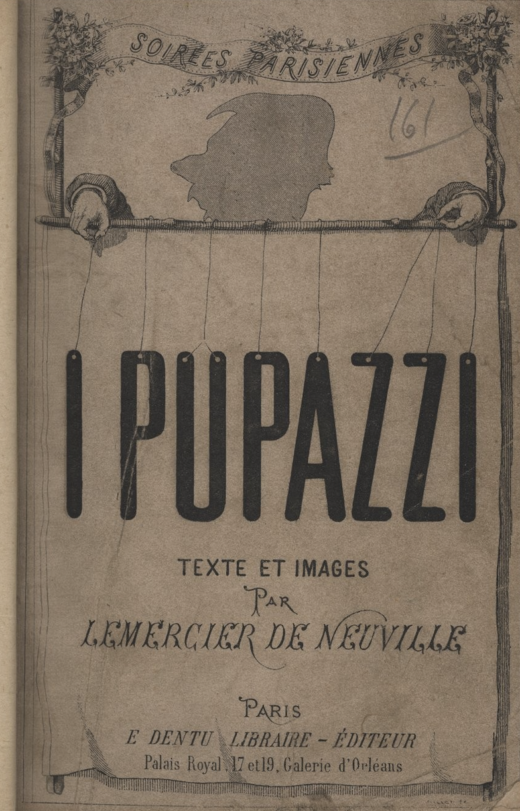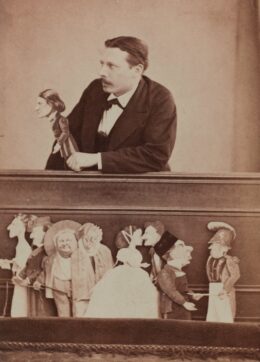
Printed
8 pages
Author(s)
Un drame à enfant
The play Un drame à enfant (Drama with a child) is part of the volume I Pupazzi published in 1866 and which is mainly composed of monologues (satirical and comical) in verses, each devoted to a different personality. The author notes that it is a book made of contemplations, portraits of personalities and accounts of recent events, in which he proves his talent as an impersonator. The articulated silhouettes of the Pupazzi were faithful portraits of celebrities from the time; he gently mocked their appearance or intellectual character.
Lemercier de Neuville directed his hand-puppet booth alone, as an author, painter, set designer and stagehand. The Pupazzi first met with success during the evening of December 28, 1862 in the workshop of photographer Étienne Carjat. The name Pupazzi was created that evening by accident, and is not related to Italian puppet theatre. The first performances used articulated silhouettes. A year after the performance of the Pupazzi on May 10, 1864, the painter Gustave Doré suggested for Lemercier de Neuville to start using glove-puppets and to add dialogues to his texts.
The play Un drame à enfant is one of the first plays adapted with dialogues and performed with glove-puppets.
A mother abandons her child and leaves with a lover
Térésa speaks soft and tender words to her child, showing how much love she has for them. However, Fabio, her lover, is knocking on the door. He asks her to join him to talk in private, but Térésa tries to resist. She soon gives in to his supplications and leaves with Fabio, abandoning her child.
Publications and translations
Lemercier de Neuville, I Pupazzi. Paris, E. Dentu, Libraire - éditeur, 1866.
Lemercier de Neuville Louis, I Pupazzi : texte et image, Hachette Bnf, 2012.
